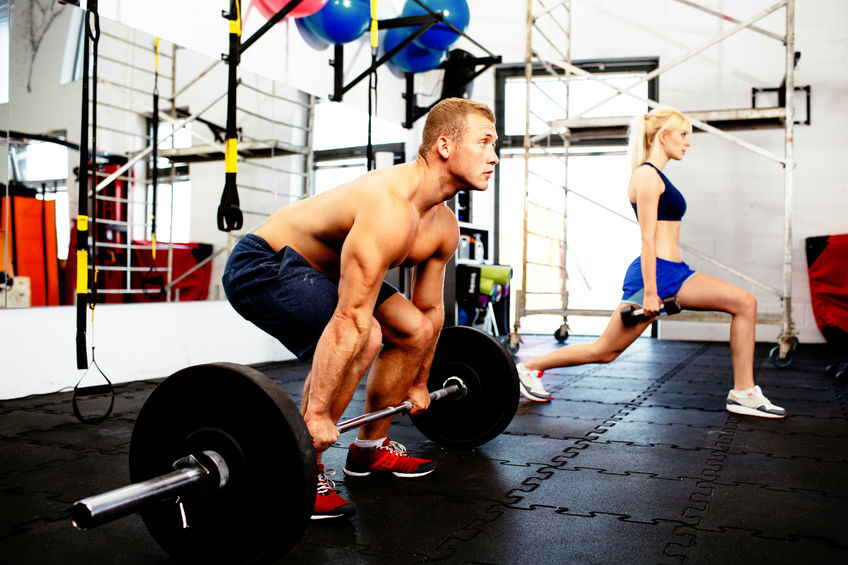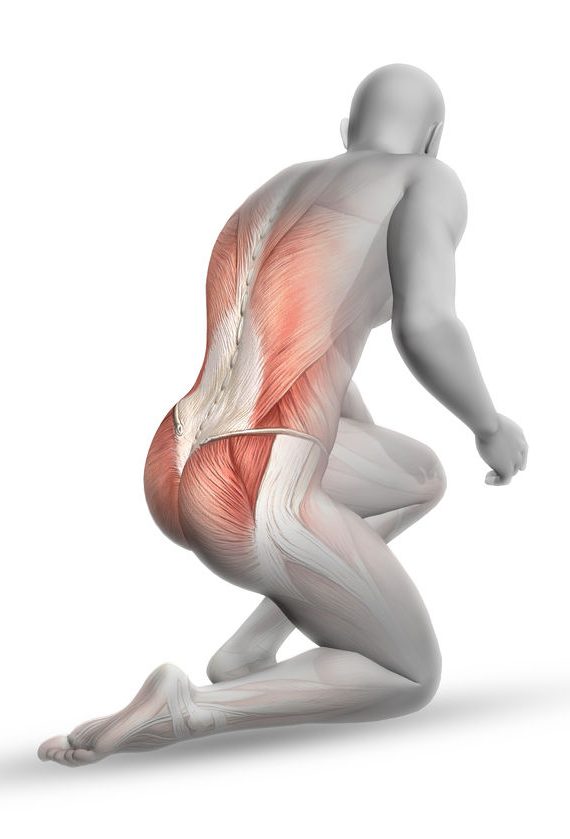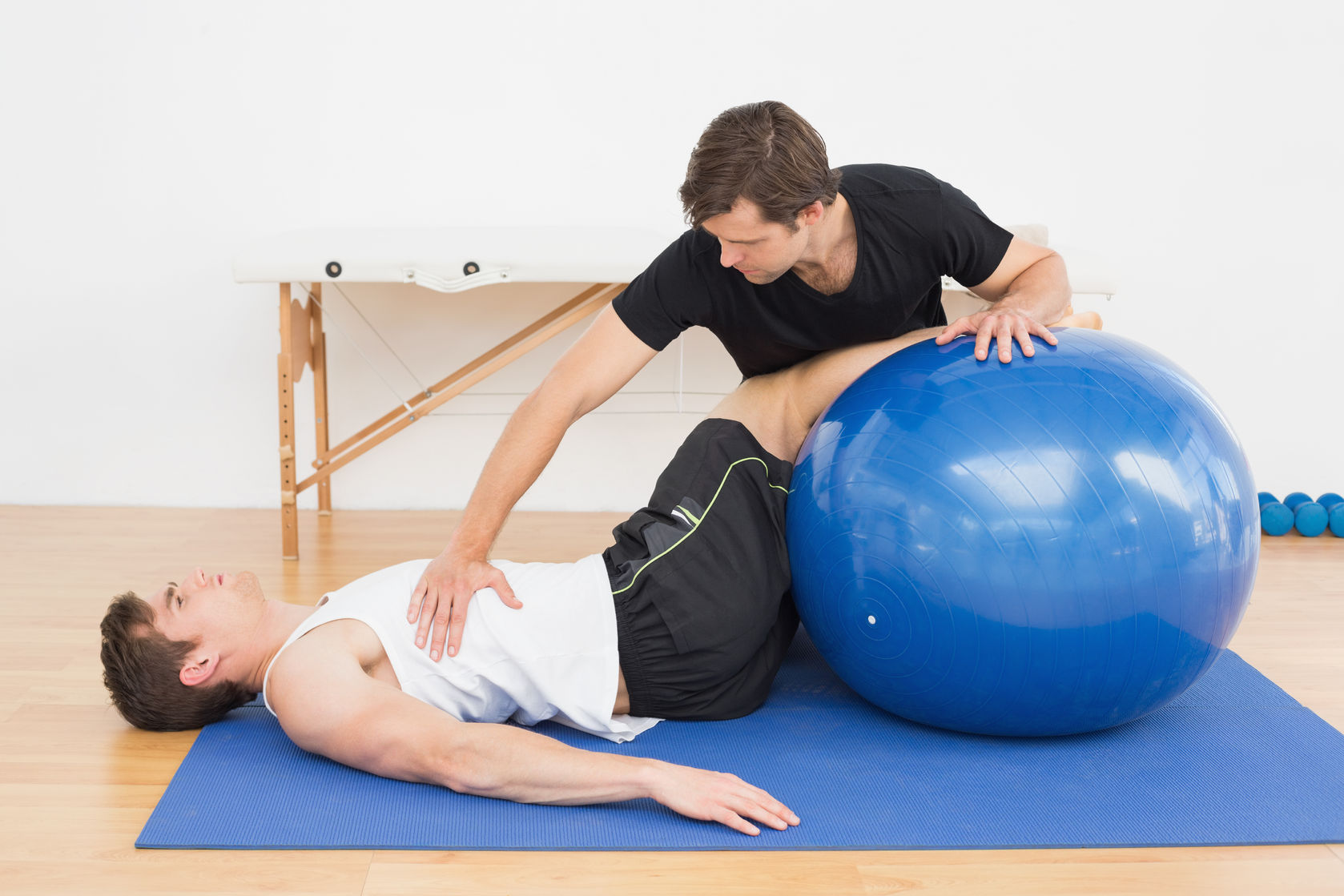Deadlifts for Low Back Strength
When we say low back we’re really referring to the whole lumbopelvic region. It’s a wide area with many joints and complicated relationships between stability vs mobility and huge amounts of force crossing over the entire region. It’s the keystone that locks in your single spine to your branching two legs, so strengthening this region is rather important for pretty much everything. One good way to strengthen the low back region is with the deadlift.
The Straight Leg Deadlift
This is one of those exercises that is slightly easier with some weight. We’ve chosen an 8kg bar for demonstration, but if you’re trying this for the first time or returning from injury then you might want to start lighter.
The Movement
- Feet under your hips or slightly wider. You want to be balanced and secure
- Your grip on the bar shouldn’t be too far apart. Imagine one hand span between your hip and your hand. This way when you stand up the bar should comfortably touch your thighs.
- Retract your shoulder blades, and keep your arms straight without locking the elbows. This becomes particularly important as you increase the weights later on.
- Keeping your spine and head position fixed, hinge from the hips, and flex forwards.
- Keep your knees straight but not locked, and let your arms pivot at the shoulders.
- Ideally you should get to 90° at the hips but don’t be discouraged if you don’t hit that mark just yet.
- Then simply reverse the move and stand up.
Its important to stress that the straight leg deadlift places considerably more stress in the low back and hamstrings, so use a lighter weight than you’d expect, and slowly build up from there. For those of us that are prone to neural irritation, such as sciatic issues, you may find this move will aggravate your condition. If you’re noticing pain down your posterior chain, this might be you, and the bent knee version might suit you better.
For the bent leg version
- Everything remains the same except:
- Bend at the knees as you go, but only enough to facilitate the hip hinge
- Keep the bar as close to your body as you can on the way down, but try not to skin your knees or shin.
- In the video, we’ve chosen to stop at mid shin level, partially because that’s the height of a resting weighted bar, but also because that’s the extent of my flexibility.
- From there stand up, again keep the bar close to your body, straighten your knees and hinge through your hips back up to a standing position



A few extra tips, remember to hinge your hips and bend your knees simultaneously and not one after the other, especially on the way up. One way to ensure you’re making your way to standing position well is to envisage lifting through your upper back. That way your head will lead the move and the rest of you should follow.
In the video we’ve used a mixed grip, meaning one overhand and one underhand. This is particularly good as it minimises the bar from rolling especially as the weights get heavier.
The Progression
Typically deadlifts is something you can really load up, so a lifting bar and plates either end is usually the standard. But if you’re just sticking to dumbbells or kettle bells then best to share the one weight between both hands.
Why the two versions?
Keeping your kneed straight means your hamstrings do more of the lifting, but at the same time stresses your low back as well because of the way your body is hinging. With your knees bent automatically makes it a more functional movement, changes the leverage of your entire body, and lets you lift far heavier than if you had your knees straight. Both are useful movements that provide an effective way of strengthening your lumbopelvic region.
Want to know more?
You can learn more about the MOH approach to low back pain and improving back function by checking out blogs in the MOH Low Back series;
- Functional Osteopathic assessment of the Low Back
- Osteopathic treatment for low back pain
- Functional exercises for Low Back Pain
- Pilates for Low Back strength & stability
- Myotherapy for low back pain
For more information, ideas and exercises check out our Health Tips blog.



